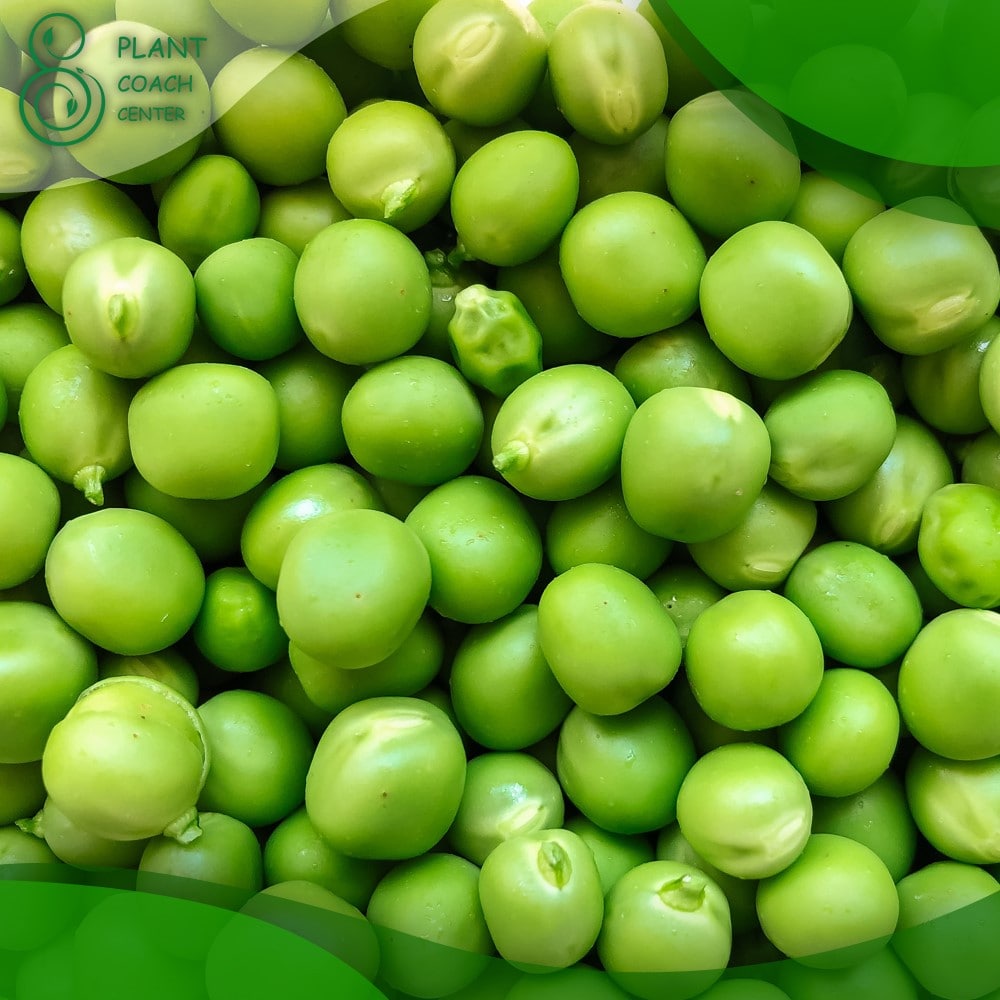When to Plant Snow Peas
Snow peas (Pisum sativum var. saccharatum) are delicious and nutritious legumes that thrive in various climates. To ensure a successful harvest, understanding the optimal planting time is crucial. This comprehensive guide explores the art of plant coaching and provides in-depth information on when to plant snow peas.
Whether you’re a novice gardener or an experienced enthusiast, this article will equip you with the knowledge and techniques needed to cultivate thriving snow pea plants. For personalized guidance and support, visit PlantCoachCenter.com, where expert plant coaches are available to assist you throughout your gardening journey.
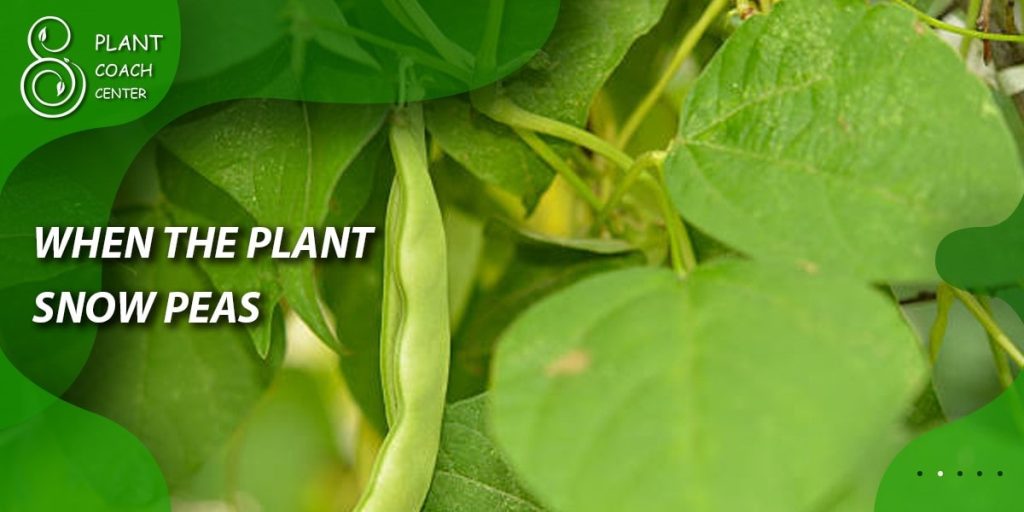
Understanding Snow Peas
Snow peas, also known as sugar peas, belong to the legume family and are characterized by their edible flat pods. These versatile vegetables offer a crisp texture and a sweet flavor, making them a popular choice for stir-fries, salads, and side dishes. Snow peas are rich in essential nutrients such as vitamin C, vitamin A, and dietary fiber, contributing to a healthy and balanced diet.
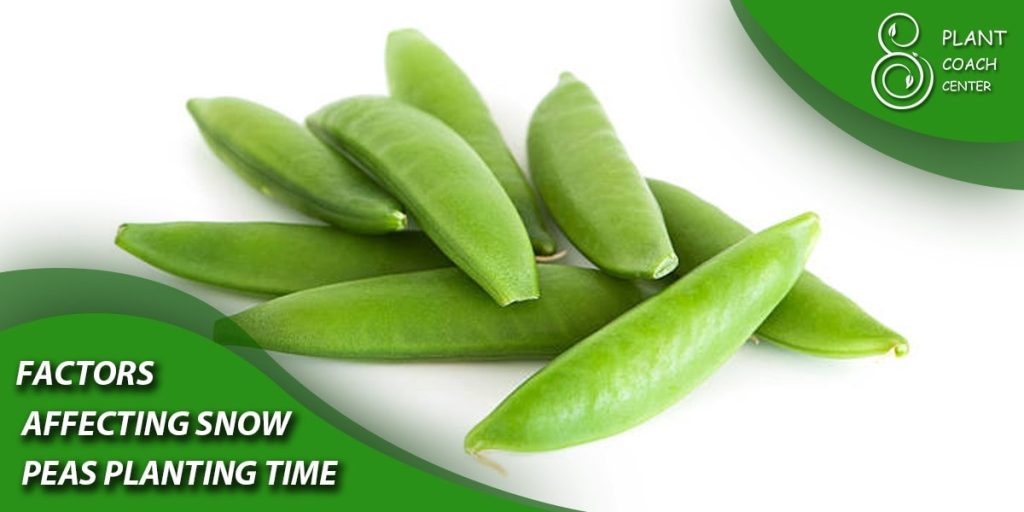
Factors Affecting Snow Pea Planting Time
Before diving into the specifics of planting snow peas, it’s important to consider various factors that influence the optimal planting time.
- Climate and Hardiness Zones
Snow peas thrive in cool to moderate climates, but their adaptability allows for cultivation in a wide range of regions. Understanding your local climate and hardiness zone will help determine the suitable planting time for snow peas.
- Frost Dates and Seasonal Considerations
Snow peas are considered cool-season crops, meaning they prefer cooler temperatures for optimal growth. It’s essential to be aware of the average frost dates in your area, as snow peas are typically planted before the last frost in spring or during the fall season.
- Soil Temperature and Moisture Requirements
Snow peas prefer well-drained soil with a temperature range between 50°F to 75°F (10°C to 24°C). Adequate soil moisture is crucial for germination and plant growth, so it’s important to maintain consistent watering practices throughout the growing season.
Spring Planting of Snow Peas
Spring is an ideal time to plant snow peas, as the soil begins to warm up, providing favorable conditions for germination and growth. Here are the key steps to consider when planting snow peas in the spring.
- Preparing the Soil for Snow Peas
To ensure healthy snow pea plants, prepare the soil adequately before planting. Follow these steps:
– Choose a sunny location with well-drained soil.
– Clear the area of weeds and debris.
– Incorporate organic matter, such as compost or well-rotted manure, to improve soil fertility and drainage.
- Direct Sowing vs. Transplanting Seedlings
There are two primary methods for planting snow peas: direct sowing and transplanting seedlings. Consider the following approaches:
Direct Sowing:
– When the soil temperature reaches around 50°F (10°C), sow snow pea seeds directly into the prepared soil.
– Plant the seeds about 1 inch deep and 2 inches apart, in rows spaced approximately 18 to 24 inches apart.
– Consider using trellises or supports to help the vines climb as they grow.
Transplanting Seedlings:
– Start snow pea seeds indoors 4 to 6 weeks before the last expected frost date.
– Transplant the seedlings outdoors once they have developed a strong root system.
– Space the seedlings according to the recommendations on the seed packet, usually 4 to 6 inches apart.
- Recommended Snow Pea Varieties for Spring Planting
When selecting snow pea varieties for spring planting, consider the following popular options:
– Oregon Sugar Pod II: A prolific variety known for its sweet flavor and stringless pods.
– Sugar Snap: Combines the sweetness of snow peas with the crunchiness of snap peas.
– Mammoth Melting Sugar: Produces large, tender pods and thrives in cooler climates.
- Best Practices for Planting Snow Peas in Spring
Ensure successful spring planting of snow peas with these best practices:
– Water the newly sown seeds gently but thoroughly after planting, ensuring the soil remains consistently moist.
– Consider using organic mulch to retain moisture, suppress weeds, and maintain a cooler soil temperature.
– Monitor the plants regularly for pests and diseases, and take appropriate measures for prevention or control.
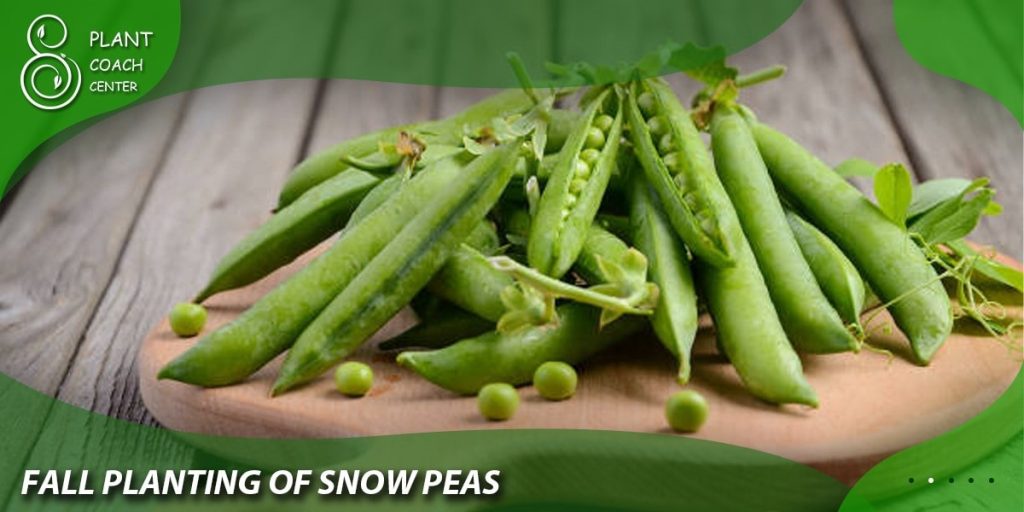
Fall Planting of Snow Peas
In addition to spring planting, fall offers another opportunity to grow snow peas. Fall planting comes with its own set of advantages and considerations. Here’s what you need to know:
- Benefits of Fall Planting for Snow Peas
Fall planting of snow peas offers several benefits, including:
– Cooler temperatures: Snow peas thrive in cool weather, and fall provides the ideal conditions for their growth.
– Fewer pests and diseases: Fall planting reduces the risk of encountering common pests and diseases that affect snow peas during the warmer months.
– Extended harvest period: By planting in the fall, you can enjoy an extended harvest period, as snow peas tend to mature more slowly in cooler temperatures.
- Preparing the Soil for Fall Planting
Proper soil preparation is crucial for successful fall planting. Follow these steps:
– Clear the planting area of any debris, weeds, or spent plants from previous crops.
– Amend the soil with organic matter to improve its structure and nutrient content.
– Ensure adequate drainage to prevent waterlogging during heavy rainfall.
- Selecting Snow Pea Varieties for Fall Planting
When choosing snow pea varieties for fall planting, opt for those with shorter maturity periods to allow for harvest before frost sets in. Some suitable varieties include:
– Dwarf Grey Sugar: A compact variety with a shorter maturity time, ideal for fall planting.
– Green Beauty: A cold-tolerant snow pea variety that produces high yields.
– Little Snowpea Purple: A unique variety with purple pods that can withstand cooler temperatures.
- Winter Protection and Management for Fall-Planted Snow Peas
To protect fall-planted snow peas from harsh winter conditions, consider the following measures:
– Apply a layer of mulch around the base of the plants to insulate the soil and protect the roots from freezing.
– Use row covers or cold frames to create a microclimate that shields the plants from extreme cold and frost.
– Regularly monitor soil moisture levels, ensuring the plants receive adequate water without becoming waterlogged.
Planting Techniques for Snow Peas
To optimize the growth and productivity of snow peas, employ various planting techniques. Explore the following approaches:
- Raised Beds and Container Gardening for Snow Peas
Consider using raised beds or containers for growing snow peas, which offer several advantages:
– Improved drainage: Raised beds and containers provide better drainage, preventing waterlogged soil that can stunt plant growth.
– Enhanced soil control: You can create a customized soil mix with optimal fertility and structure for snow peas.
– Easy access and space efficiency: Raised beds and containers allow for easier plant care and maximize space utilization in small gardens or urban settings.
- Companion Planting and Intercropping with Snow Peas
Companion planting involves strategically planting compatible crops alongside snow peas to promote mutual benefits. Consider the following companions:
– Radishes: Planting radishes near snow peas helps deter pests, as the radish scent acts as a natural repellent.
– Carrots: Snow peas and carrots make excellent companions, as their root systems complement each other without competing for nutrients.
– Culinary herbs: Herbs like parsley, dill, and basil can enhance the flavor of snow peas and attract beneficial insects.
- Precision Planting Methods for Snow Peas
Precision planting refers to techniques that optimize seed spacing and depth for improved growth and yield. Consider the following precision planting methods:
– Seed tape: Pre-made seed tapes allow for precise seed placement at the recommended spacing, reducing the need for thinning.
– Seed disks or planters: These tools help distribute seeds evenly and at the correct depth, ensuring uniform germination and plant development.
– Seed spacing markers: Use markers or string lines to guide you while sowing seeds, maintaining consistent spacing throughout the planting area.
- Soil Amendments and Nutrient Management for Snow Peas
Snow peas benefit from nutrient-rich soil. Consider the following practices to improve soil fertility:
– Organic compost: Incorporate compost into the soil before planting snow peas to enrich it with organic matter and essential nutrients.
– Balanced fertilizers: Apply a balanced organic fertilizer, such as one with an NPK ratio of 10-10-10, to provide necessary nutrients for snow pea growth.
– Crop rotation: Rotate snow peas with other crops each season to prevent nutrient depletion and minimize the risk of pests and diseases.
Care and Maintenance of Snow Peas
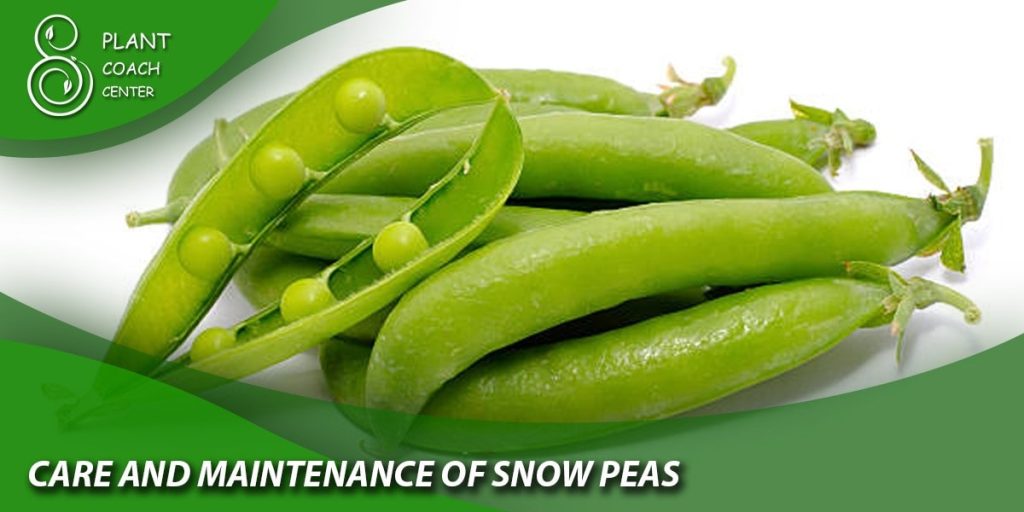
To ensure healthy and productive snow pea plants, proper care and maintenance are essential. Follow these guidelines throughout the growing season:
- Watering and Irrigation
Maintaining consistent soil moisture is crucial for the growth of snow peas. Consider the following watering practices:
– Water deeply and thoroughly, ensuring the soil is evenly moist but not waterlogged.
– Avoid overhead watering, as wet leaves can increase the risk of fungal diseases.
– Water early in the day to allow foliage to dry before evening, reducing the chance of disease development.
- Trellising and Support for Snow Pea Vines
Snow peas are climbing plants that require support to grow upright and maximize space utilization. Use the following methods for trellising and support:
– Install trellises, stakes, or netting to provide a structure for the snow pea vines to climb.
– Train the vines to grow vertically, gently tying them to the support system as they grow.
– Regularly check and adjust the supports to ensure the vines remain upright and well-supported.
- Mulching and Weed Control
Mulching and weed control are essential for maintaining a healthy growing environment for snow peas. Follow these practices:
– Apply a layer of organic mulch around the base of the plants to conserve moisture, suppress weeds, and regulate soil temperature.
– Regularly inspect the planting area and remove any weeds that compete with snow peas for nutrients and water.
– Take care when weeding to avoid damaging the shallow root system of snow pea plants.
- Pest and Disease Management
Snow peas can be susceptible to various pests and diseases. Employ these strategies to manage common issues:
– Monitor plants regularly for pests such as aphids, slugs, and caterpillars. Remove pests by hand or use organic pest control methods if necessary.
– Practice crop rotation to reduce the risk of pest and disease buildup in the soil.
– Maintain good airflow around the plants by providing adequate spacing and removing any diseased or damaged foliage promptly.
Care and Maintenance of Snow Peas
Harvesting Snow Peas
The joy of growing snow peas culminates in the harvest of fresh, tender pods. Follow these guidelines for a successful snow pea harvest:
– Harvest snow peas when the pods are flat, bright green, and plump but still tender.
– Use clean scissors or pruning shears to avoid damaging the plants when harvesting.
– Regularly check the plants and harvest the pods frequently to encourage continuous production.
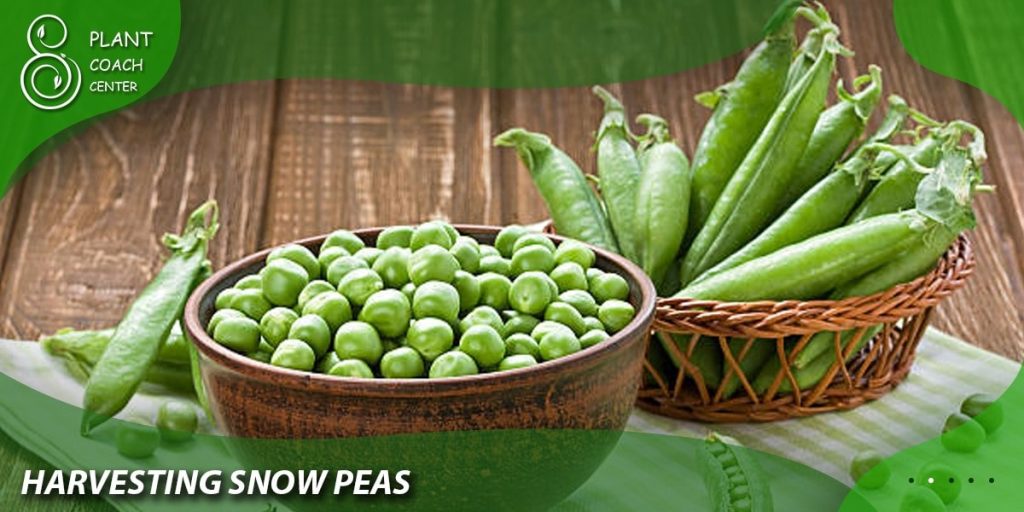
Conclusion
Cultivating snow peas can be a rewarding experience, providing a bountiful harvest of crisp and sweet pods. By understanding the optimal planting time, employing effective planting techniques, and providing proper care and maintenance, you can enjoy the delights of homegrown snow peas throughout the seasons.
Remember, for personalized guidance and support, visit PlantCoachCenter.com, where expert plant coaches are ready to assist you in your gardening journey. Happy planting and enjoy the delicious flavors of fresh snow peas straight from your garden!


